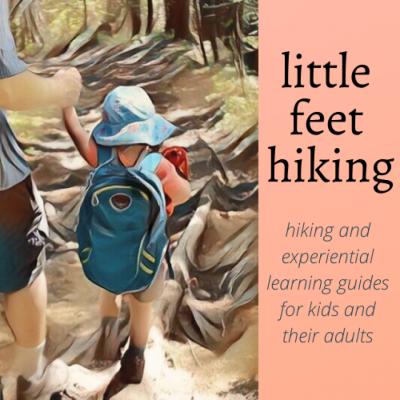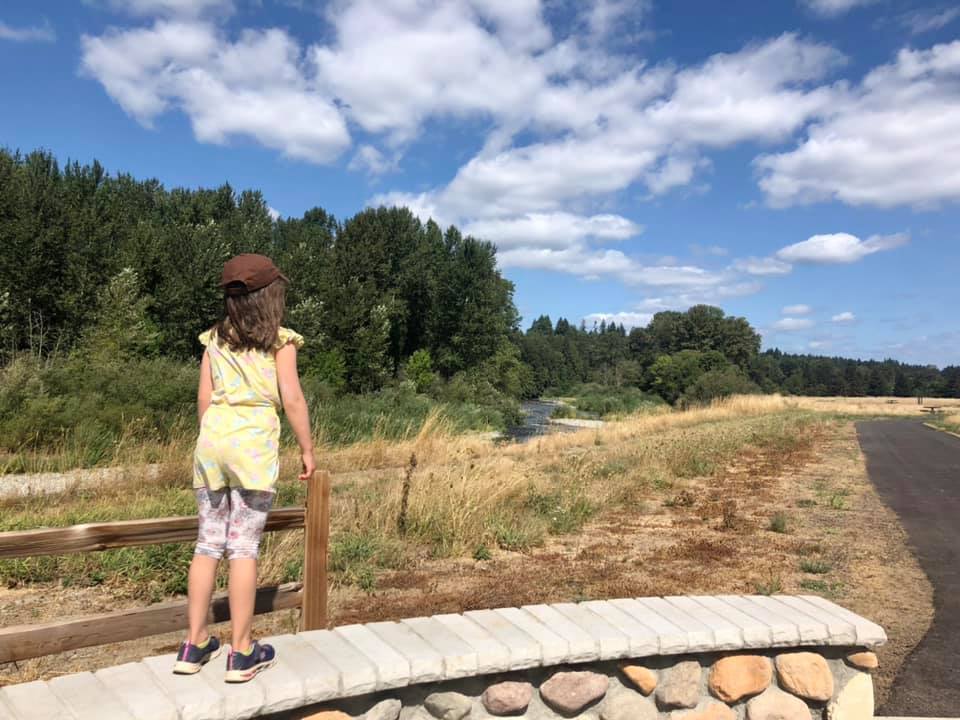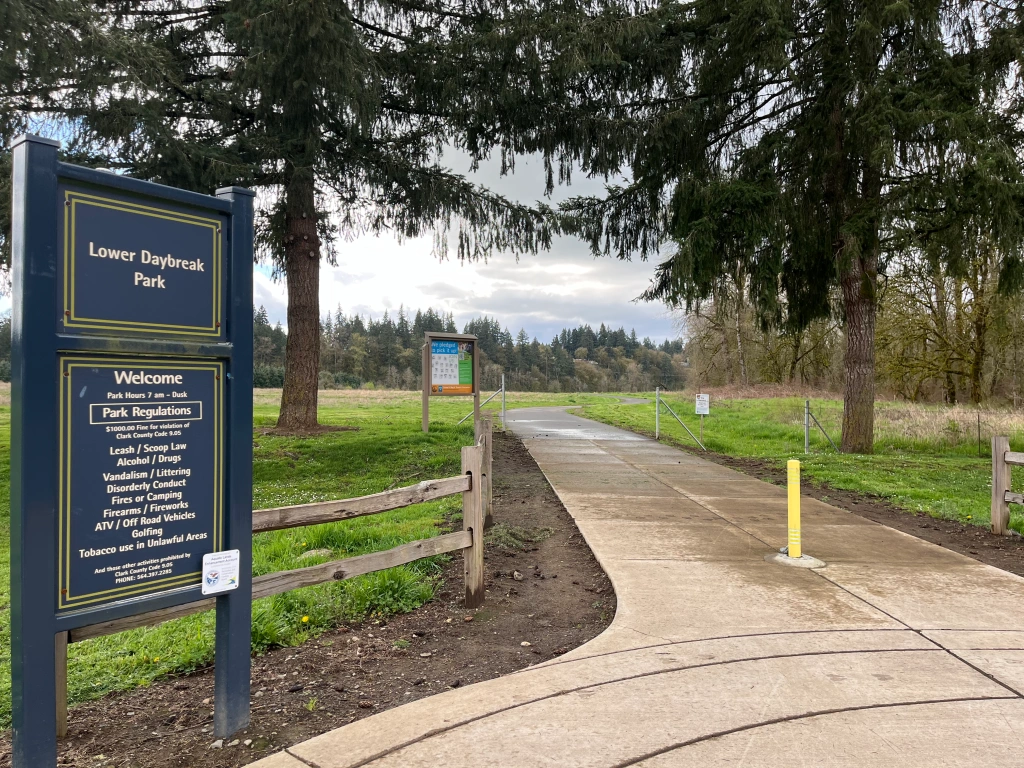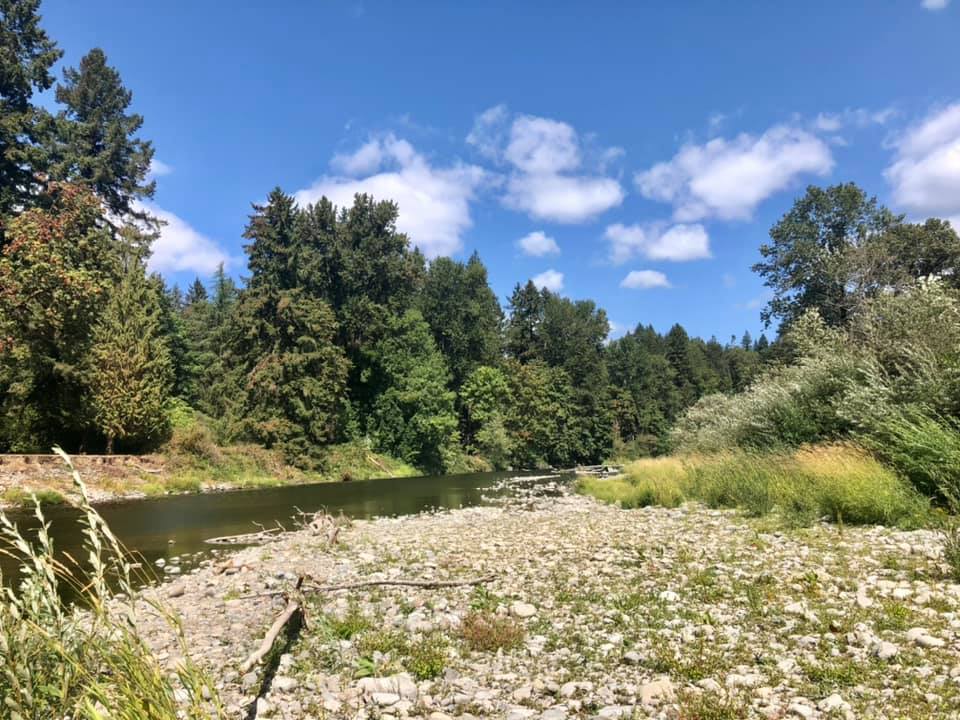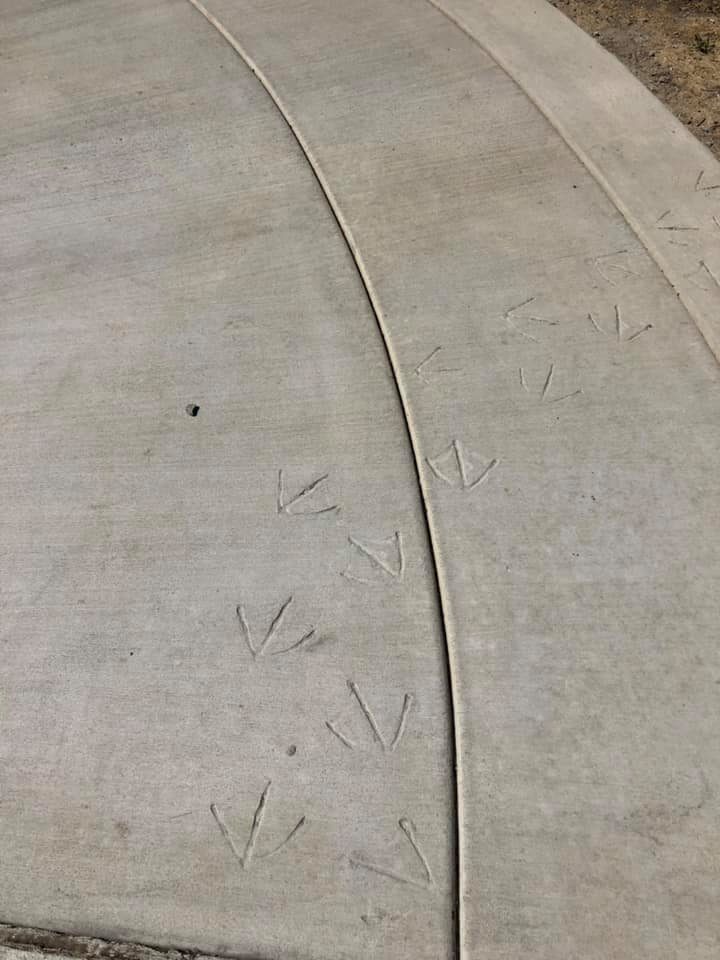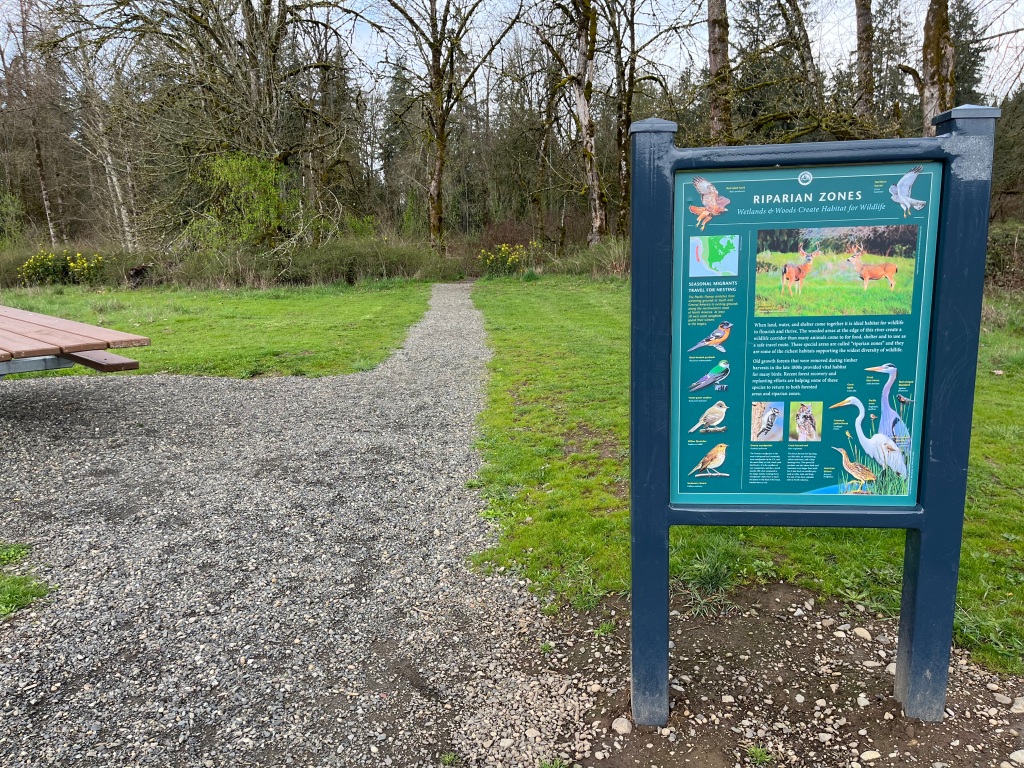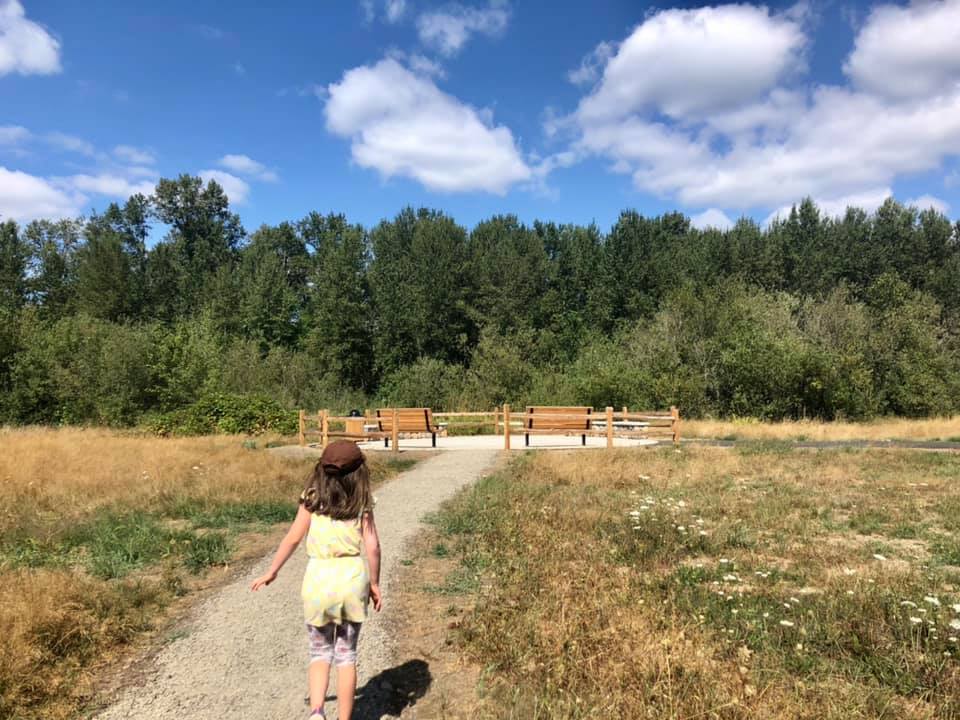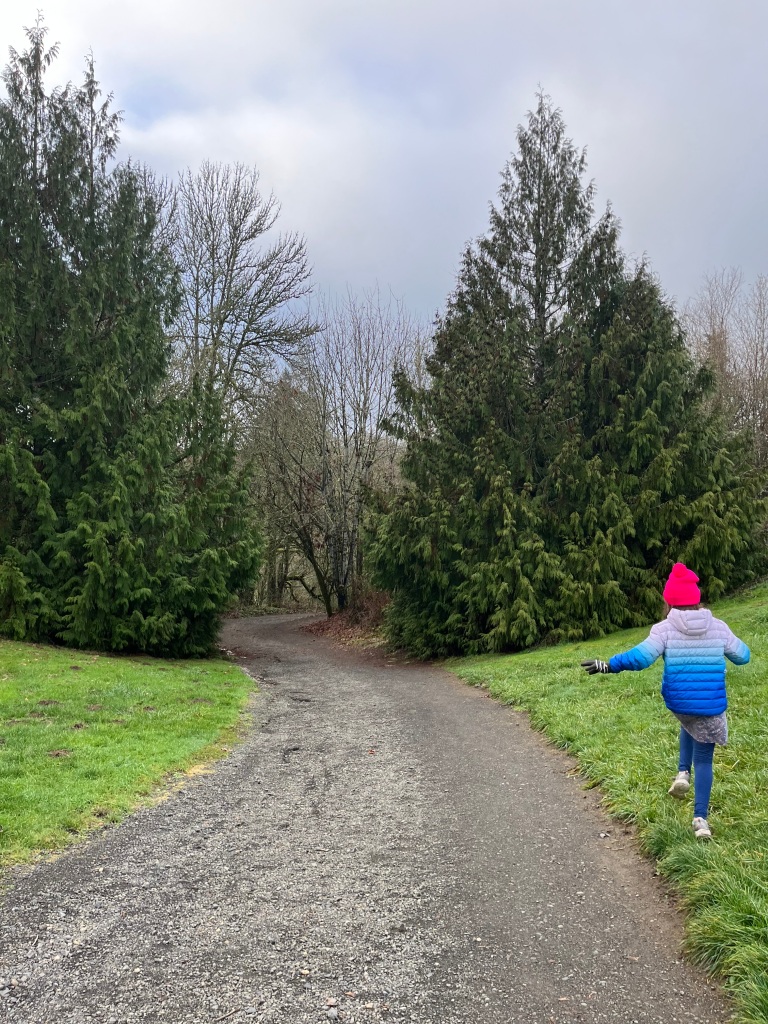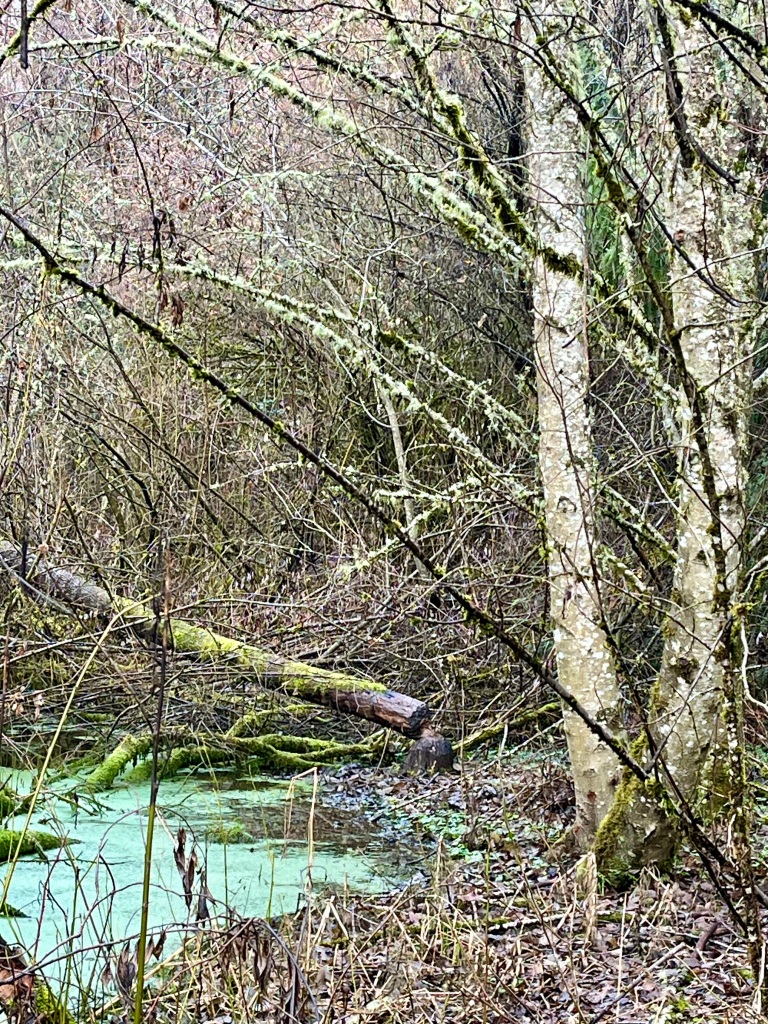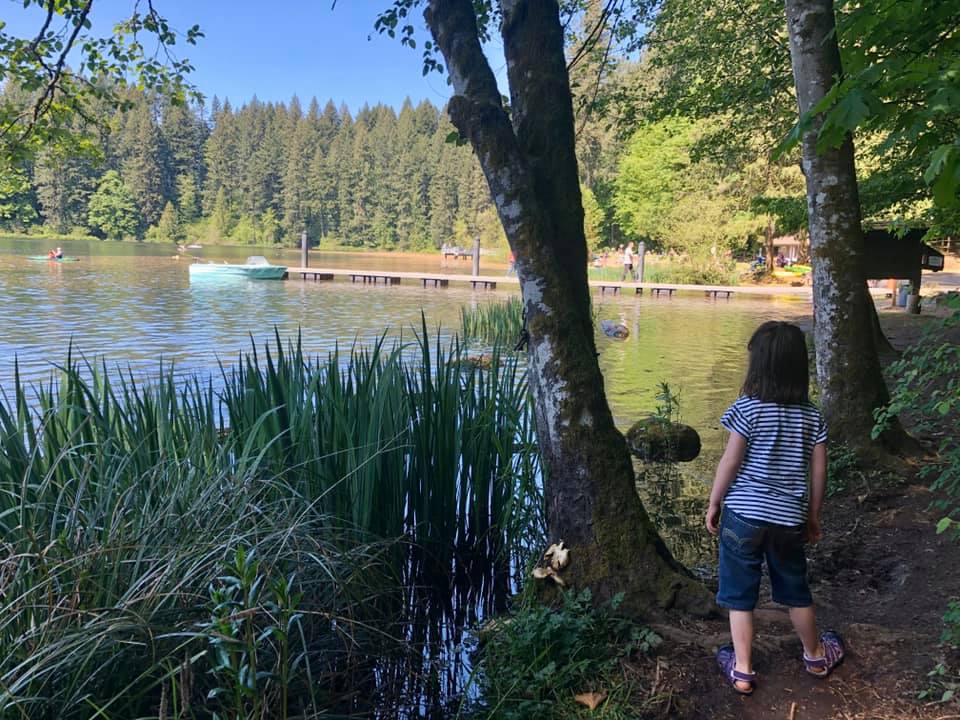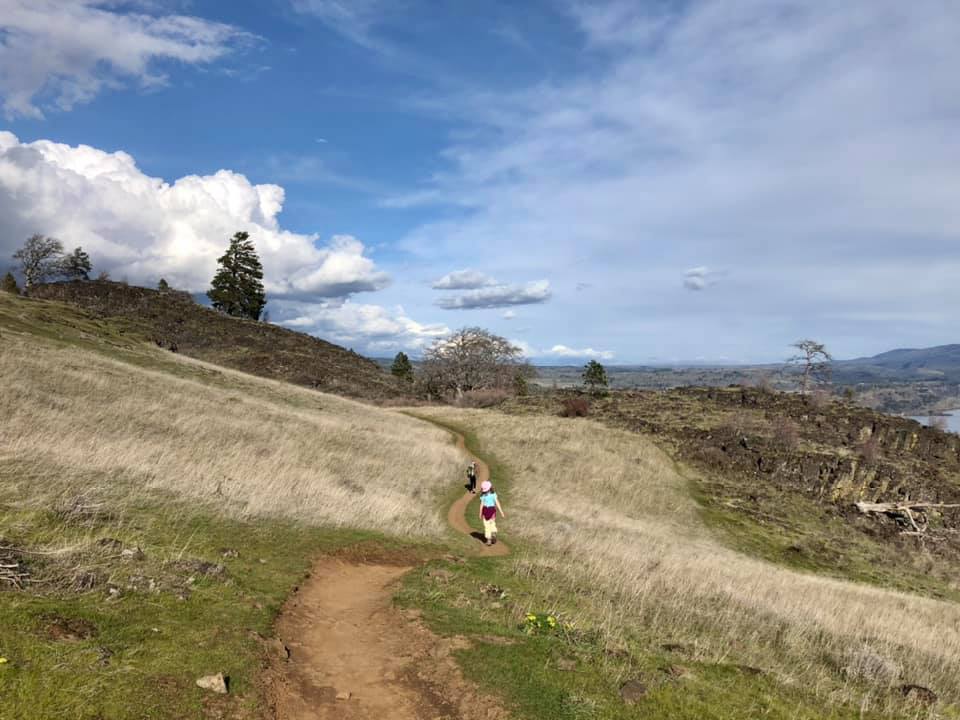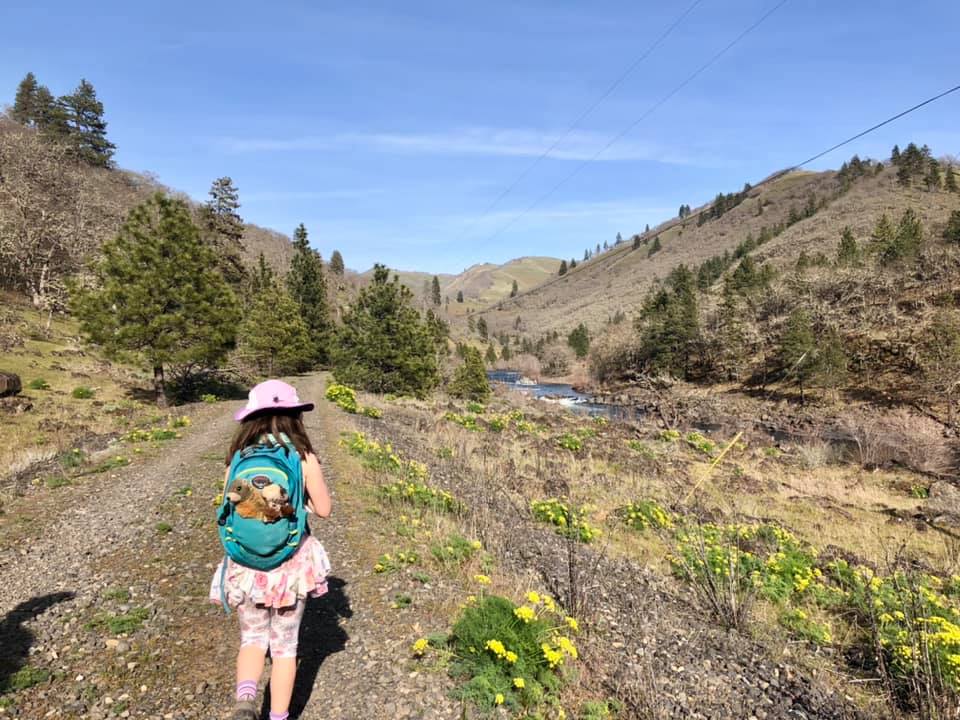Town/City: Washougal
Walk Length: 1 mile total
Elevation Gain: Minimal; a few small hills
Seasons: All Year
Trail surface: Pavement
Popularity: Moderate on weekends
Why Should You Check Out This Walk? This short, paved, and low barrier walk is a lot of fun for kids. The trail travels between brand new apartment buildings and the river, and it leads to a Bigfoot-themed nature playground, river access, and an excellent Mt. Hood viewpoint.
Considerations: Works for all strollers and young walkers. You’ll just need to keep kids away from the river and out of parking lots and construction areas.
Ways to Engage Kids:
- Play on the playground
- Watch boats scoot by on the water
- Spy Mt Hood and read about her on the interpretive sign
- Watch for birds
- Find the bald eagle statue and learn about bald eagles through an interpretive sign
Trail Description: From the parking area on South A Street in Washougal, head south and then west on a paved trail. Pass a signed spur trail leading down to an access for the Columbia River. This spot is rocky and grassy, and not stroller-friendly. However, if you keep going west on the main trail, you will reach a better spot for river access next to the waterfront park. On your walk, you will pass a fun Bigfoot-inspired nature playground and then see the path downhill to the river. This rocky/concrete shore has some old rebar sticking up, so I recommend bringing sandals or water shoes and reminding kids to watch where they step. Just past here, you will arrive at Washougal Waterfront Park, where there are restrooms and a roundabout trail with an excellent view of Mt. Hood.
Important things to know:
Seasons: Year-round
Parking: Free
Website: https://portcw.com/parks-trails/
Dogs okay? Yes, on leash
Conveniences: Flush toilets; play area; picnic shelter; benches; interpretive signs
Restrooms: Flush toilets at the turnaround point at Washougal Waterfront Park
Risks specific to the trail: River; debris along the river shore; very windy in winter; the playground may not be suitable for all ages
Recommended extra gear: Sun protection; mosquito repellant early in summer
Trailhead GPS coordinates: 45.578665, -122.368366
Driving Directions: Head east on S. Marina Way, which turns into S. A Street. After passing S. 7th Street, you will see the parking area on the right.
